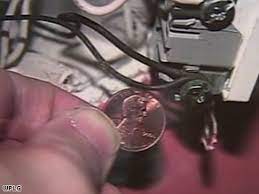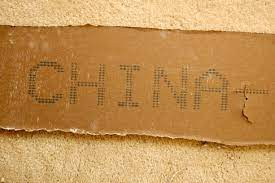Chinese Drywall
Free Tainted Drywall Inspection with Home Inspection for Homes Built Between 2004 – 2007. A $350 Savings!
Free Tainted Drywall Inspection with Home Inspection for Homes Built Between 2004 – 2007. A $350 Savings!
Chinese drywall is defective or tainted drywall imported from China. Not all drywall manufactured in china is tainted. Some defective drywall is not stamped at all and there are a few reported cases where defective drywall bears the name of a U.S. company. It is unknown whether the drywall was actually manufactured in the U.S. or made in China and re-branded here. See our Chinese Drywall Inspection from youtube below.
The Hillsborough County Property Appraiser’s Office is evaluating homes and offering a discount of up to 50 percent of the value, depending on the severity of the drywall problem.
The value of the land would not be included in the deduction. Homeowners can call the office at (813) 272-6100 to inquire about the deduction.
There are several theories regarding the cause of defective drywall.
Many believe that the tainted drywall was manufactured at the gypsum mine in Tianjin, China which used fly ash, a waste material that is a byproduct from the power plants using coal.. Fly ash can leak into the air and emit sulfur compounds.
Testing by the Florida Department of Health, however, has revealed significant amounts of organic material present in the Chinese drywall ranging from 5 to up to 15 percent. Strontium sulfide, a material that can emit corrosive gases in moist air, was found at trace levels in the testing of Chinese-made drywall, the Florida Department of Health said.
Gas emitted from defective drywall corrodes copper wiring,  turning it black, some Florida homeowners say. The drywall samples gave off a sulfurous odor when heated, and in at
turning it black, some Florida homeowners say. The drywall samples gave off a sulfurous odor when heated, and in at
least one case, sulfide gases corroded copper coils in an air conditioner of a Florida home containing Chinese drywall, said the department, which commissioned the study.
But more testing is needed to determine whether strontium sulfide was causing the odor and contributing to the corrosion, the department said. And more tests are required to determine whether the drywall poses a threat to human health.
Concerns about Chinese-made drywall, which is suspected by some homeowners of ruining appliances and causing health problems, emerged in Florida last year but have transcended state lines, with class-action lawsuits alleging it has caused problems in at least three states: Florida, Louisiana, and Alabama. The Florida Department of Health has received about 150 complaints, and the U.S. Consumer Product Safety Commission says it is investigating the Florida allegations.
Homeowners’ lawsuits against certain manufacturers and suppliers contend the drywall has caused them to suffer health problems such as headaches and sore throats and left them facing huge repair expenses. The drywall is alleged to emit sulfur-based gases that smell of rotten eggs and corrode piping and wiring, causing electronics and appliances to fail in homes built between 2004 and 2007, around the time a building boom and post-hurricane reconstruction caused a U.S. drywall shortage and spurred builders to use imports.
One of the emitted gases was carbon disulfide, Unified’s report said. Breathing it at low levels for long periods “may result in headaches, tiredness, trouble sleeping and slight changes in the nerves,” according to the Web site of ATSDR, which is part of the U.S. Department of Health and Human Services. CLICK HERE to view a video from ABC News.
To find out more about Chinese drywall, click here, where you’ll find all of the latest information.
Trust our certified inspectors to provide an in-depth analysis of your home, identifying potential problem areas and offering valuable recommendations for improvement.
Schedule Your Inspection TodayWith over 30 years of experience, state licensing, and ASHI Certification, we perform the highest quality, unbiased evaluations of your home. We inspect everything from one-bedroom condominiums to multi-million dollar homes and high-rise buildings.
